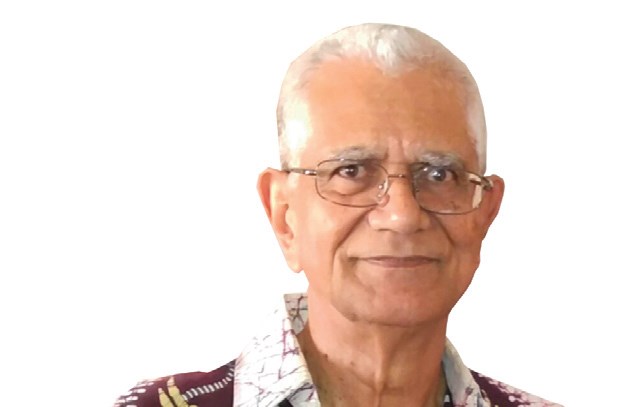Florida has more than 15,000 unhoused people or six percent of the national total and a 17 percent rise over 2022. In response to this crisis, Republican Gov. Ron DeSantis and the Republican majority in the Legislature designed the Florida model,” as they call it: relocate them out of sight.
Standing behind a podium with a poster proclaiming “Don’t Allow Florida to become San Francisco,” the governor signed the “Unauthorized Public Camping and Public Sleeping” bill into law. Like many other, it hamstrings local governments, barring them from allowing the homeless to sleep or camp on public property and rights-of-way as of Oct. 1. They could designate land for that purpose once it does not “adversely and materially” affect nearby residents or commercial properties.
The law empowers businesses and residents to sue a county that does not comply and seek legal fees if the lawsuit succeeds. It kicks in when there are not enough shelter beds – and there are not.
“Florida will not allow homeless encampments to intrude on its citizens or undermine their quality of life like we see in states like New York and California,” the governor declared. A month earlier, he said that the bill, then being debated, must address homelessness in ways “focused primarily on ensuring public order, ensuring quality of life for residents, ensuring that people’s property values are maintained.”
DeSantis said nothing about addressing the multitude of problems that cause homelessness. Instead, he was echoing comments by the bill’s Senate sponsor, Sen. Jonathan Martin (R-Fort Myers), and Rep. Sam Garrison (RFleming Island), that left little doubt as to the motive.
Like many other severely conservative talking points turned into law, the legislation – likely to be dubbed “Don’t Say Homeless” — was instigated by a non-Florida source: the Cicero Institute, created by venture capitalist Joe Londsdale of Austin, Texas, who supported DeSantis’ failed presidential campaign. Cicero registered to lobby for the anti-homelessness bill.
However, this war on the unhoused is not new. As previously reported, Fort Lauderdale police 10 years ago arrested 90-year-old Arnold Abbott for trying to distribute lunches to the unhoused outside Stranahan Park. Another ordinance empowered the police to seize and keep an unhoused person’s belongings until a fee was paid. Still another, foreshadowing the new state law, barred the homeless from camping in public.
Last year, Miami Beach police arrested 20 unhoused people who refused to be moved to a shelter. West Palm Beach blasted songs such as “Baby Shark,” meant for children, to discourage them from sleeping in its waterfront park.
One myth invoked as a reason to chase the unhoused from public spaces is that they are a threat to law and order. However, it is they who are the victims of violence. In December 2021, an unhoused man was shot in the head and left lying unconscious on the sidewalk in Miami. Two miles away, Jerome Anthony Price’s body was found riddled with bullets.
The National Coalition of the Homeless released a report In 2020 indicating that, between 1999 and 2019, crimes against the unhoused totaled 1,852, 515 of them fatal. Florida ranked second, with 261, after California, with 390.
Some police encounters with the unhoused have been disturbing. An African American man was killed during a jaywalking stop in Orange County, Calif., while experiencing a mental crisis. In Honolulu, U.S. District Judge Leslie Kobayashi sentenced police officer John Rabago to four years in prison for forcing an unhoused man to lick a public urinal. “You took from him his only possession: his dignity as a human being,” the judge told Rabago.
But homelessness is also about soulsapping loneliness. An average of seven unhoused people a day died alone in 2020 on sidewalks and pavements and in alleys in Los Angeles, The New York Times reported. “They were a small fraction of the thousands of homeless people across the country who die each year.”
In some cases, bodies were not discovered for hours; some remained unclaimed at the morgue despite efforts to reach family members. “In San Francisco, where people sleeping in cardboard boxes, tents and other makeshift shelters are a common sight, the body of a homeless man who died on a traffic median . . . lay for more than 12 hours before being retrieved,” The Times said. An anonymous message on a cardboard sign left at the scene read: “Guy lay dead here & no one noticed.”
Also, some men are “ill-equipped” to handle “triggers” in life such as illness and losing a job or a spouse, U.S. Surgeon General Dr. Vivek Murthy told The Times. “As men get older,” he said, “they tend to be less good at building and maintaining relationships. When people do not have a safety net to catch them in the form of community and strong, healthy relationships, it’s much more likely they end up struggling with substance-use disorders, with mental illness and homelessness.”
Indeed, the unhoused are 35 times as likely as the general population to die of drug or alcohol overdose, the Los Angeles County Department of Public Health reported. They are four times as likely to die of heart disease, 16 times as likely to die in a car crash, 14 times as likely to be murdered and eight times as likely to die of suicide, The Times said.
There are no indications that Florida officials conducted studies to determine the causes of homelessness in the state, which would be a first step to determining how to help the unhoused. Driving them away is a heartless cop-out.
One shining example of what can be done is the work of the Miami-Dade County Homeless Trust, which is financed by a local tax and promotes a “Housing First approach for moving more people off the streets and into crisis housing while quickly connecting them with permanent housing through the Continuum of Care,” the Trust says on its website.
It may be that Floridians would prefer spending their tax dollars on such initiatives than on flying refugees to Martha’s Vineyard, dispatching members of the National Guard to the border and posting law enforcement officers to Key West to interdict refugees – all of which are within the purview of the federal government.
A few cities have experimented with a Universal Basic Income for the unhoused with encouraging results: Denver, San Francisco; Santa Fe, N.M.; Philadelphia, Boston, Durham, Minneapolis and Austin, and some upstate New York rural areas. But Republican leaders call it “socialism.”
Another initiative could be funding from billionaires, such as a $2 billion pledge from Jeff and Mackenzie Bezos in 2019 to nonprofits that support homeless families (and to fund free pre-schools for children in low-income families.) A few are indeed spending their wealth trying to build homes — in outer space.
Also, simply befriending the unhoused will go a far way to helping them cope with their circumstances. A child’s curiosity about the homeless led to a long-term relationship between Chase Hansen and his father John with some of them in Salt Lake City that included lunch once or twice a week and eventually the creation of a self-funded Project Empathy charity, The Washington Post reported.
Even without this new state-mandated assault on the homeless, who seem less protected than the Florida grasshopper sparrow, their plight can easily evoke the melancholy in the English poet Thomas Gray’s 1751 “Elegy Written in a Country Churchyard”:
“Full many a gem of purest ray serene
The dark unfathom’d caves of ocean bear:
Full many a flower is born to blush unseen,
And waste its sweetness on the desert air.”
Martin Folsom of Jacksonville, unhoused on and off most of his first 18 years, proved that it need not be so. He graduated in 2020 with a 4.06 GPA as valedictorian at the A. Philip Randolph Career Academy.
Kristen Brownell, writing in HuffPost, described in unflinching details her experience as one of 90,000 unhoused people in Los Angeles and her struggle to regain her identity. She accused the media of tending “to see homeless people as all the same ― as though everyone who’s living on the streets has the same origin story, the same challenges and the same ill-fated destiny. This approach often ends up stripping these people of their humanity. … Instead, what if we thought about who these people were before they were homeless? What if we reminded ourselves that they were once ― and still are in many cases ― someone’s child, father, mother, sister, brother, friend? What if we thought about who they are now on the streets and who they could be after homelessness?” What, indeed?










No Comment